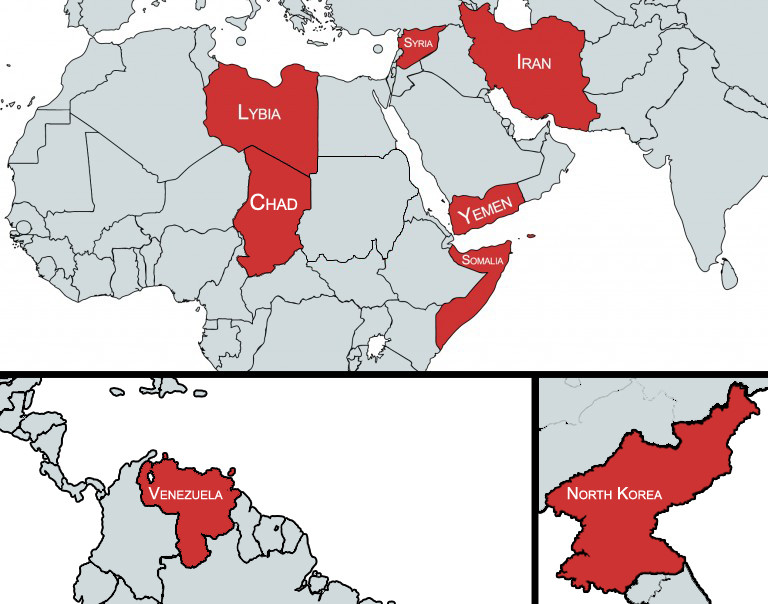On September 24, 2017, President Trump issued a proclamation replacing his previous Travel Ban Executive Order (“EO-2”), though it is substantially similar in many respects. The proclamation serves to make the Travel Ban indefinite and modifies the list of countries affected. Individuals from the designated countries with valid visas may continue to travel to the United States. Furthermore, waivers to the Travel Ban are available to individuals with established ties to the U.S. or other compelling reasons. The effective date of the new travel ban is September 24, 2017 for individuals previously impacted by EO-2, and October 18, 2017 for newly affected individuals.
The countries now affected by the Travel Ban as a result of the proclamation are: Chad, Iran, Libya, North Korea, Somalia, Syria, Venezuela, and Yemen. Sudan and Iraq were removed from the original Travel Ban list, and Chad, North Korea, and Venezuela have been added. The restrictions applied vary by country. The proclamation states that the U.S. determines which countries are subject to the Travel Ban based on its ability to confirm the identities of foreign nationals seeking an immigration benefit and to assess whether they are a security or public safety threat. That determination incorporates the following three categories of criteria:
- Whether the country issues electronic passports embedded with data to enable confirmation of identity, reports lost and stolen passports to appropriate entities, and makes available upon request identity-related information not included in its passports.
- Whether the country makes available, directly or indirectly, known or suspected terrorist and criminal-history information upon request, whether the country provides passport and national-identity document exemplars, and whether the country impedes the United States Government’s receipt of information about passengers and crew traveling to the United States.
- Whether the country is a known or potential terrorist safe haven, whether it is a participant in the Visa Waiver Program that meets all of its requirements, and whether it regularly fails to receive its nationals subject to final orders of removal from the United States.
The Supreme Court was set to hear arguments on the legality of Trump’s Travel Ban on October 10, 2017, but the Court announced this morning that it will not hear arguments on that date, instead requesting the litigants to submit briefs by October 5, 2017 regarding the effect of Trump’s proclamation on the case. The Court previously reinstated substantial portions of the Trump Travel Ban on June 26, 2017, following injunctions issued by lower courts. The Court ruled that EO-2 may not be enforced against foreign nationals who have a credible claim of a bona fide relationship with a person or entity in the United States, but that all other impacted foreign nationals are subject to the Travel Ban.
President Trump signed EO-2 on March 6, 2017, a substantially revised version of an Executive Order titled “Protecting the Nation from Foreign Terrorist Entry into the United States,” (“EO-1”) which imposed a 90-day ban on the issuance of new visas for individuals from six majority-Muslim countries. EO-1 was signed on January 27, 2017, and was plagued by a chaotic rollout and a wave of lawsuits nationwide challenging its legality. On February 3, 2017, a Federal District Court in Seattle issued a temporary restraining order prohibiting the U.S. Government from implementing President Trump’s Travel Ban. The restraining order was subsequently upheld by the 9th Circuit Court of Appeals on February 9, 2017. EO-1 was voluntarily rescinded by the Trump administration when EO-2 took effect.
Because the situation remains fluid, we created this FAQ to help you stay current with the latest information. Check back often for regular updates.

